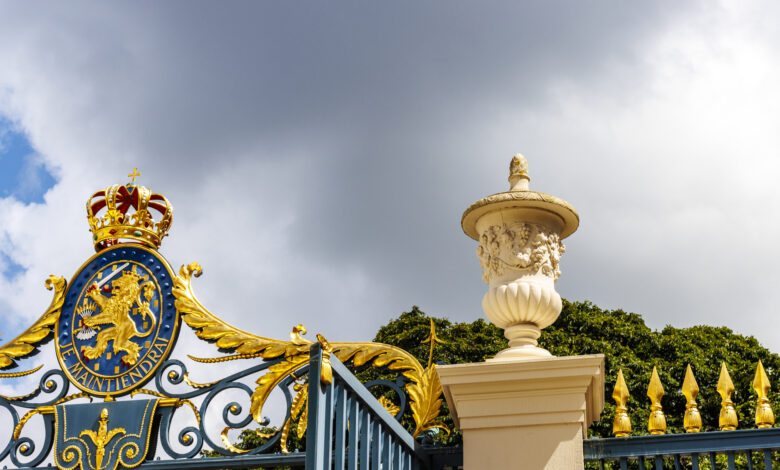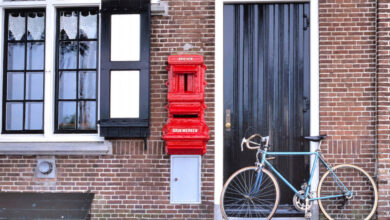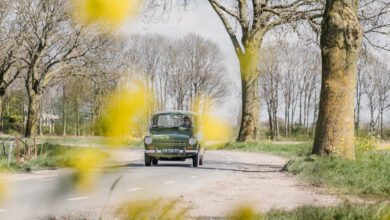
A look into the Dutch Royal family
Are you curious about the Dutch Royal family? The Dutch Royals have always held a special place in the hearts of the Dutch people. From kings and queens to princes and princesses, they have a rich history and play an important role in Dutch society. Let’s take a closer look at the lives of the Dutch Royals, from their origins and duties to their popularity and the role they play in the media.
Who are the Dutch Royals?
The Dutch Royals are the members of the Dutch Royal family. They are a prominent and well-known family in the Netherlands, and their history dates back centuries. The current Dutch Royal family is headed by King Willem-Alexander and Queen Máxima. They have three daughters, Princess Catharina-Amalia, Princess Alexia, and Princess Ariane. The Dutch Royals are known for their close ties to the Dutch people and their active involvement in various aspects of Dutch society. They have a significant role in representing the Netherlands both nationally and internationally. The Dutch Royals are highly respected and admired by the Dutch people and they hold a special place in the hearts of the nation.
The Dutch Royal Family tree
The Dutch Royal family, also known as the House of Orange-Nassau, has a long and rich history that dates back centuries. The family tree of the Dutch Royals showcases the lineage and succession of the monarchy throughout the years.
At the top of the family tree is King Willem-Alexander, the current Dutch King. He is the son of Princess Beatrix, who reigned as Queen of the Netherlands from 1980 to 2013. Queen Beatrix succeeded her mother Queen Juliana, who was the reigning monarch from 1948 to 1980. Queen Juliana, in turn, succeeded her mother Queen Wilhelmina, who was the longest-reigning Dutch monarch: ruling from 1890 to 1948. Queen Wilhelmina’s reign included significant events such as World War I and World War II. The family tree also includes other notable members such as Prince Claus who was the husband of Queen Beatrix and Prince Bernhard, the husband of Queen Juliana. Queen Máxima, the wife of King Willem-Alexander is also an important member of the family tree.
History of the Dutch monarchy
The Dutch monarchy has a long and fascinating history. It dates back to the 16th century when William of Orange, also known as William the Silent, led the Dutch Revolt against Spanish rule. William of Orange played a crucial role in establishing an independent Dutch state and is considered the founder of the House of Orange-Nassau. The House of Orange-Nassau has been the ruling family of the Netherlands since its inception. Over the centuries the Dutch monarchy has seen various ups and downs, including periods of prosperity and challenges. The monarchy has evolved and adapted to the changing times, maintaining its relevance and connection with the Dutch people.
One of the significant events in Dutch monarchy history was the establishment of the Kingdom of the Netherlands in 1815. This followed the defeat of Napoleon Bonaparte and the Congress of Vienna, which recognized the Netherlands as a sovereign state. The first king of the Netherlands was King Willem I, who played a crucial role in shaping the modern Dutch nation. Throughout its history, the Dutch monarchy has witnessed several important milestones and moments. From Queen Wilhelmina’s leadership during World War I and World War II to Queen Beatrix’s reign, which saw significant societal changes, the Dutch monarchy has been a witness to and participant in Dutch history.
In recent years, the Dutch monarchy has undergone further changes. In 2013, Queen Beatrix abdicated the throne in favor of her son Willem-Alexander, making him the first Dutch king in over a century. King Willem-Alexander and Queen Máxima have brought a modern and approachable style to the monarchy, connecting with the Dutch people and representing the Netherlands on the international stage.
Duties and responsibilities of the Dutch Royals
The Dutch Royals have various duties and responsibilities that they fulfill as members of the Dutch Royal family. These duties are an essential part of their role in representing the Netherlands and serving the Dutch people.
One of the primary responsibilities of the Dutch Royals is to represent the Netherlands both nationally and internationally. They act as ambassadors for the country, promoting its interests and strengthening diplomatic ties with other nations. The Dutch Royals attend state visits, official ceremonies and international events, where they meet with foreign leaders and dignitaries.
In addition to their diplomatic duties, the Dutch Royals also engage in charitable work and patronages. They support and promote various causes, such as education, healthcare and cultural preservation. The Dutch Royals often serve as patrons of organizations and foundations that work towards these causes, lending their name and support to raise awareness and funds.
The Dutch Royals also have a ceremonial role within the Netherlands. They participate in national celebrations and events such as King’s Day and Liberation Day, where they interact with the Dutch people and express their gratitude for their support. The Dutch Royals also attend official ceremonies such as the opening of parliament, where they symbolize the unity and stability of the Dutch nation.
Furthermore, the Dutch Royals play a vital role in fostering national unity and cohesion. They act as a unifying force for the Dutch people, transcending political divisions and representing the entire nation. The Dutch Royals visit different regions of the Netherlands, engaging with local communities and promoting a sense of belonging and pride in the country.
Charitable work and patronages
The Dutch Royals are actively involved in charitable work and have various patronages that they support. They are committed to promoting and supporting causes such as education, healthcare and cultural preservation. The Dutch Royals often serve as patrons of organizations and foundations that work towards these causes, lending their name and support to raise awareness and funds.
Through their patronages, the Dutch Royals help to shine a light on important issues and contribute to positive change in society. They use their platform and influence to draw attention to causes that are close to their hearts and make a difference in the lives of others. The Dutch Royals are passionate about using their position to give back and make a positive impact.
In addition to their patronages, the Dutch Royals also engage in hands-on charitable work. They often visit hospitals, schools and other institutions to meet with individuals and communities in need. They offer their support, encouragement and empathy to those facing difficult circumstances and work to bring attention to the challenges they face.
The Dutch Royals in the media
The Dutch Royals have always been in the spotlight of the media. Their public engagements, official visits and personal lives are often covered by the press. The Dutch media closely follows the activities of the Dutch Royals, providing updates and insights into their lives. From royal weddings and births to charity work and diplomatic trips, the media plays a crucial role in keeping the public informed about the Dutch Royals.
The Dutch Royals have a strong presence in both traditional and social media, with news outlets and social media platforms covering their every move. The media coverage of the Dutch Royals can be both positive and critical, reflecting the public’s interest and opinions. The Dutch Royals understand the importance of media engagement and often participate in interviews and media events to share their perspectives and promote their causes. They also use social media platforms to connect with the public and share updates about their activities.
The media plays a significant role in shaping the public’s perception of the Dutch Royals and their role in society. It provides a platform for discussion and debate about the monarchy and its relevance in modern times. The Dutch Royals navigate the media landscape with grace and professionalism, understanding the power and influence of the media in shaping public opinion. They value the media’s role in keeping the public informed and strive to maintain a positive relationship with the press. The Dutch Royals’ presence in the media ensures that their work and contributions are recognized and appreciated by the Dutch people.
Popularity and criticisms
The Dutch Royals have always been popular figures in the Netherlands, with a strong connection to the Dutch people. They are admired for their dedication to their duties and their representation of the country both nationally and internationally. However, like any public figures, they are not immune to criticisms.
One of the criticisms often directed towards the Dutch Royals is the cost of the monarchy. Some argue that the funding allocated to the Royal family could be better spent on other societal needs. Others question the relevance of a hereditary monarchy in a modern democratic society. Another criticism is the perceived lack of transparency in the Royal family. Some believe that there should be more openness about their finances and the way they conduct their affairs. There have been calls for more accountability and scrutiny of the Royal family’s actions.
Despite these criticisms, the Dutch Royals remain popular and well-loved by many. They are seen as symbols of national unity and stability and their presence at public events and engagements is often met with enthusiasm and support. The Dutch people appreciate their efforts in representing the country and their commitment to charitable causes.



